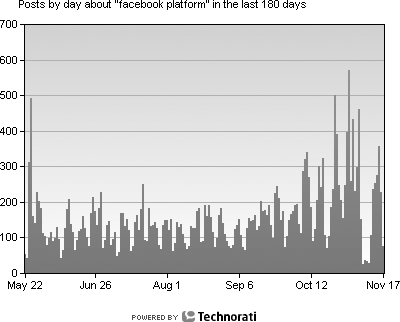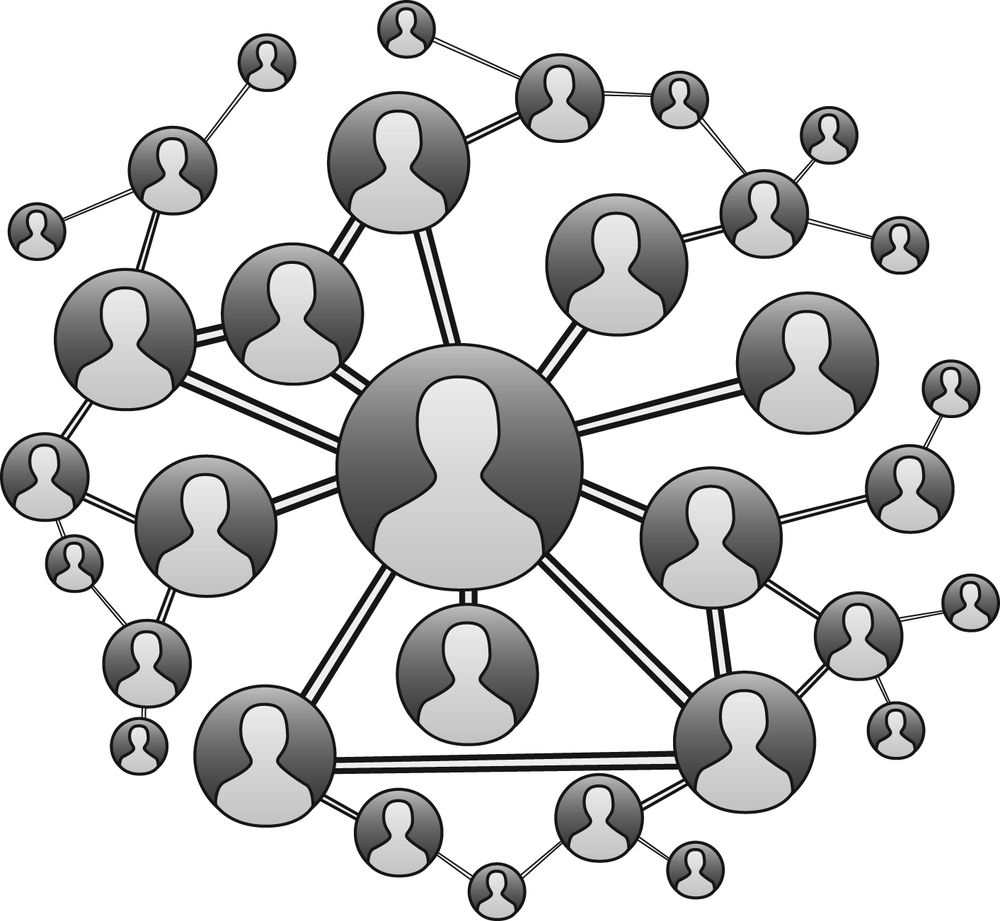Many profound questions have haunted scholars and thinkers since the dawn of humanity: Why are we here? Does God exist? What is art? Where does the other sock go? The question of whether or not to build an application on Facebook[1] Platform is not one of them.
That said, since you’re holding this book in your hands, you’ve likely already spent some time pondering this question. Perhaps you have recently been bitten by a zombie or been given some fish for an aquarium you didn’t know you owned. Maybe you were challenged to a round of movie trivia or told that you were someone’s Top Friend. If you’re a Facebook user (and it’s increasingly likely that you are), you’ve probably installed an application or been invited to install one by a member of your ever-growing social network.
Although it may seem impossible to live without those applications, Platform hasn’t always been part of Facebook. Mark Zuckerberg unleashed Facebook Platform on May 24, 2007, at an event held at the San Francisco Design Center attended by 800 developers. For all the epic speechwriting and grandiose claims (Mark opened his presentation with, “Today, together, we’re going to start a movement”), that day really did mark an important moment in the history of the industry. The enthusiastic and decidedly nervous founder of Facebook might just as well have been standing on that blue stage and waving a vial of gold over his head, yelling, “Gold! Gold! Gold from the American River!” Just as surely as Samuel Brannan’s march through the streets of San Francisco heralded the start of the California Gold Rush, news of the Platform exploded onto the Web. Technorati shows nearly 500 blog posts with the term “Facebook Platform” from that day, up from practically none the day before (see Figure 1-1).
At the time of the announcement, Facebook counted just over 24 million active users (defined as people who have returned to the site in the last 30 days). At the time this book was written, its user base has exploded to more than 90 million[2] and continues to grow at the astounding rate of 200,000 new users per week. Numbers like that tend to be somewhat difficult to understand—if all those people impossibly stood on each other’s shoulders, they’d reach 93,000 miles into the sky! But consider that San Francisco has a population just shy of 800,000 people, and now imagine each and every one of them sitting down in front of their computers and diligently joining Facebook in the same month. The current growth rate runs at about 3% a week, and if you consider that the world’s population is only growing at a rate of about 1.14% a year, it becomes mathematically possible to calculate the Facebook Singularity: the point at which every human on the planet has been signed up and is filling your inbox with free gifts, pokes, and friend requests. Although it’s difficult to figure out how much Platform has to do with that growth, it’s notable that there have been over a billion installs of almost 24,000 apps, and that some of those apps (such as Slide’s Top Friends and FunWall and RockYou’s Super Wall) are seeing well over a million daily users.
Chances are, if you’re reading this book, you’re comfortable with the concept of an operating system (OS), be it Windows, Mac OS, or Linux. In a lot of ways, you can think of Facebook Platform as an OS for social networking. Platform provides many of the important and underlying technologies that enable the social graph, a term Facebook uses to describe a social network.
The social graph is a representation of all the connections that make up a social network. Every member of the network has his own social graph, which represents that user’s unique set of connections to other members of the same network. The example shown in Figure 1-2 depicts the social graph of the person in the center, whom we’ll call Mark. The people in the network who are directly connected to Mark are shown slightly smaller than him, the people he’s indirectly connected to are shown even smaller, the next level even smaller, etc, etc. The social graph isn’t unique to Facebook (although it’s certainly one of the biggest on the Web); it is actually a common property of any network in which things are joined to other things. It’s a useful visualization tool to show the structure of the interlinked nodes (the topology of the network), and it can also be used to calculate the value of any one node (usually based on the number of links it has to other nodes). Although it may not seem so at first, network value is a fascinating topic, especially when it’s worth an estimated $15 billion.[3] You can figure out the value of any network by applying Metcalfe’s Law: the value of a telecommunications network is proportional to the square of the number of users of the system (n2). Robert Metcalfe, who coinvented Ethernet along with David Boggs and cofounded 3Com, first formulated his law to explain the network effects of things like joining computers or fax machines together, but it’s just as useful for explaining social networks and the Web. The math behind the law is actually pretty simple and is easily illustrated by looking at the social graph just shown. If Mark is the first person to join Facebook, the value of the network is one (12 = 1). When Mark’s friend Sarah joins, the network has become a lot more valuable because now Mark can stop poking himself and can now poke someone else. It’s so much more valuable, in fact, that the value doesn’t just increase by one but actually becomes four (22 = 4), meaning that the network is now four times more valuable to Mark and Sarah than it was to either one alone. Eventually, after every member of Mark’s very extended circle of family and friends has joined, the network has 54 million users, the value of the network is too high to calculate on most calculators (54,000,0002 = 2,916,000,000,000,000), and suddenly Microsoft is offering Mark $240 million for 1.6% of his company.
Before we get too far off topic, there’s a reason why the value of the social graph is important, and it’s one of the three pillars upon which Platform was launched:
- Deep integration
Two of the most popular Facebook applications are Photos and Videos, both written by internal Facebook developers. Your applications get the same level of integration as these do (known as application parity), and you have basically the same access to Platform.
- Mass distribution
Here’s where the network value comes into play. Those of you old enough to remember television commercials from the 1970s may recall an ad campaign for a shampoo called Faberge Organics (with wheat germ oil!), which holds the distinction of being an almost entirely forgotten line of hair products whose marketing strategy has long, long outlasted the product it once promoted. One of their television commercials showed a blonde woman who had presumably just washed her hair with Organics. The voiceover said, “If you tell two friends about Faberge Organics shampoo with wheat germ oil and honey, they’ll tell two friends, and so on... and so on... and so on...”, which was accompanied by a Brady Bunch-esque splitting of the screen into more and more squares of smiling models. Now think of the social graph from Figure 1-2: if Mark does something interesting and Facebook automatically tells two of his friends, they might do the same interesting thing, and two of their friends will find out. Since most people on Facebook have a lot more than just two friends, the network effect does a lot more than just double at every point (if everyone on the site had an average of 10 friends, for example, the message would reach a million people in six generations). It’s safe to say that Facebook offers an opportunity to distribute to a much larger audience much more quickly than virtually any other technology in history.
- New opportunity
This brings us to the bottom line: Deep Integration + Mass Distribution = New Opportunity. Building applications on Facebook Platform gives you a chance to get your software in front of 90 million people without having to spend millions on marketing, in an environment that is built to spread it to people who want to use it. The barrier to entry is very low and requires only that you retrain some of your existing web development skills (or learn some basic new ones), all of which you can master with this very book.
You’re probably thinking that this all sounds a little too good to be true, and that if this book were a late-night infomercial, I would be telling you all of this from a sleek speedboat hurtling across my own private lake toward my towering mansion, accompanied by scantily clad models and drinking magnums of champagne. The truth is that champagne gives me nasty headaches, and that, although building apps on the Platform can be very profitable and lead to a satisfying career, it’s not a breezy walk in the park. Like almost everything else in life, you’ll still need an original idea, and you’ll still need to roll up your sleeves and dig into some hard work. The rest of this book will help to make that as easy as possible by telling you how to get set up quickly, providing practical advice on what to build and how to evaluate your idea, working through the technical side of Platform, and showing you some proven marketing techniques for your new application.
[1] Facebook is a registered trademark of Facebook, Inc.
[2] f8 Keynote Address (http://www.new.facebook.com/f8)
Get Facebook Cookbook now with the O’Reilly learning platform.
O’Reilly members experience books, live events, courses curated by job role, and more from O’Reilly and nearly 200 top publishers.



